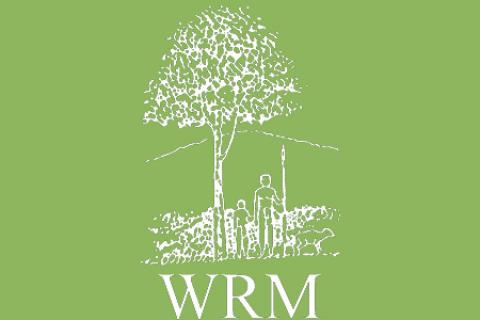On February 12, more than 100 environment, development and human rights groups in the war-ravaged Democratic Republic of Congo (DRC) have formed a unique alliance to oppose the “development” of the country’s rainforests, which could include a vast increase in industrial logging.
Bulletin articles
Decades of deforestation and forest degradation have left less than two percent of Ghana's native forest intact. These forests have been the source of livelihood for forest dependent people, providing them with fuel wood, charcoal, building materials, fodder, fruits, nuts, honey, medicines, dyes. They also play an environmental role regarding prevention of soil erosion, watershed protection, soil fertility/shade, shelter from wind, prevention of floods and landslides, water retention and maintenance of water purity.
Swaziland, a landlocked country with a population of 1,161,219 inhabitants in 17,363 sq km almost completely surrounded by South Africa, has timber as its second industrial activity after sugar.
During the Conference “Timber Plantations: Impacts, Future Visions and Global Trends” held in Nelspruit, South Africa, in November 2003, hosted by GeaSphere in association with the TimberWatch Coalition, Nhlanhla Msweli, from SCAPEI, gave a vivid testimony of Swaziland’s situation and grief linked to monoculture tree plantations.
Mining has devastating impacts on the environment and on people, but it has also specific serious effects on women (see WRM Bulletins Nº 71 and 79). Besides causing deforestation and contaminating the earth, rivers and air with toxic waste, mining destroys the private and cultural spaces of women, robbing them of their socialization infrastructure and social role, and all that for the sake of profit of just a handful of huge corporations.
Komodo National Park (KNP) was established by the Government of Indonesia in 1980 to protect the habitat of the unique giant lizard Varanus komodoensis, called Komodo dragon. In 1995, the central government invited the US-based organisation, The Nature Conservancy (TNC) to co-manage the park.
For hundreds of years, Heuny and Jrou indigenous people living in Nong Phanouane and Houay Chote villages have practised rotational swidden farming in their forests on the Boloven Plateau in the south of Laos.
Now, government officials have told them that they have to stop swidden farming and will soon be forced to move. The reason? They have the misfortune to live in a watershed which the government declares must be protected because of a proposed hydropower dam.
Local communities from all over Malaysia reject the country’s attempt to greenwash its timber industry. During the COP-7 meeting of the Biodiversity Convention in Malaysia in February, representatives for 253 indigenous, forest based communities presented a statement describing the Malaysian Timber Certification Council scheme, MTCC, as a scheme that "has caused, and continues to cause, the further marginalisation of our communities".
The recently launched campaign is ongoing, and signatures from additional communities rejecting MTCC are still coming in.
The Malaysian Timber Certification Council scheme, MTCC, is set up to meet demands from the Western markets for a green stamp on tropical timber, and MTCC has been a pioneer among the national certification schemes from tropical countries to really invest in getting acceptance from the European market. Malaysian delegations, headed by the Minister of Primary Industries, have several times visited Europe, and the active promotion of their own scheme has worked.
Mining is one of the activities that international allocation of labour has imposed on the countries of the South, rich in natural resources. However, in no case has it led to the general welfare of the country; on the contrary, it could be considered a curse (see WRM Bulletin No. 71).
In Costa Rica, the Gold-mining Opposition Committee has been active in denouncing the numerous and devastating impacts of mining, related to mining in itself, the elimination of mine waste, transportation of the mineral and its processing, often involving or producing hazardous materials.
The Naso (also known as Teribe) are one of the first groups that settled in the Panamanian territory. After several European armed expeditions, the number of Naso had decreased drastically to the point that by the nineteenth century there were less than two thousand individuals remaining. At present there are approximately 4,000 Naso on both sides of the Costa Rican and Panamanian border, generally living in poor conditions. In Panama, they inhabit the province of Bocas del Toro, in the northwestern forests bordering the Teribe River, a larger tributary of the Changuinola River.
On 8 March, a major mobilization took place on Route BR-101 North in the Brazilian State of Espirito Santo, in the locality of São Mateus. Coinciding with International Women’s Day, and with numerous women participants, close on 600 Tupinikim and Guarani indigenous people, representatives of the Quilombos (Afro-Brazilian communities) and members of the Landless Rural Workers Movement (the well-known MST) and of the Small Farmers’ Movement (MPA, a member of the Via Campesina), occupied the highway and halted traffic.
Tracing back the background of United States pressure on Ecuadorian politics could take us very far back in time and consume many pages.
